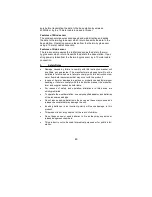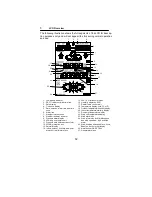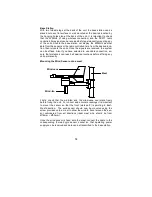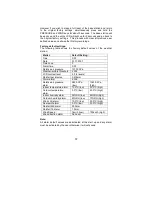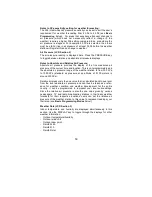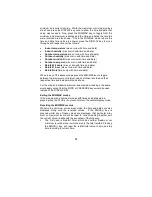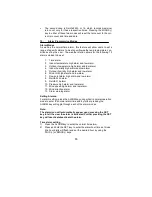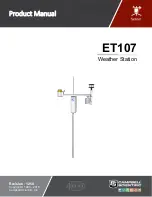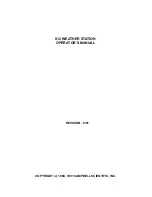
51
the connection is detected, the base station will automatically continue
reading the data from the sensor.
The user may at any time switch from cable connection to using
433MHz (or vice versa) by simply disconnecting (or connecting) the
cable from the base station to the sensor. When the base station de-
tects no cable connection to the sensors, the existing data reading in-
terval is changed to the new reading interval, i.e. using cable connection
is every 8 seconds data reading interval or from 32 seconds - 128 sec-
onds intervals when using 433MHz (depending on wind speed)
Using the AC adaptor to operate the base station will also supply power
to the sensor if the cable is connected to it. Batteries used for 433MHz
transmission may be left in the sensor when using cable connection for
power back-up in case of AC power failure. A loss of power would de-
synchronize the base station and the sensor and no weather data will
be received. To Synchronize the units so that the weather data can be
received, press and hold the PLUS(+) for 2 seconds. However in gen-
eral, batteries that will not be used for long periods should be removed
to avoid leakage.
Wireless 433MHz transmission:
Using 433MHz wireless transmission of weather data from the sensor to
the base station will provide users greater freedom as to where units
can be positioned without the need to be restricted by cable.
Note:
If no outdoor weather data is displayed or the signal to the sensors is
lost during setting up, mounting, changing of batteries to the sensor or
plugging or unplugging cables, simply press and hold the PLUS(+) key
for 2 seconds and a short beep will sound to synchronize the base sta-
tion to sensors. Without being synchronized, weather data will not be
received.




